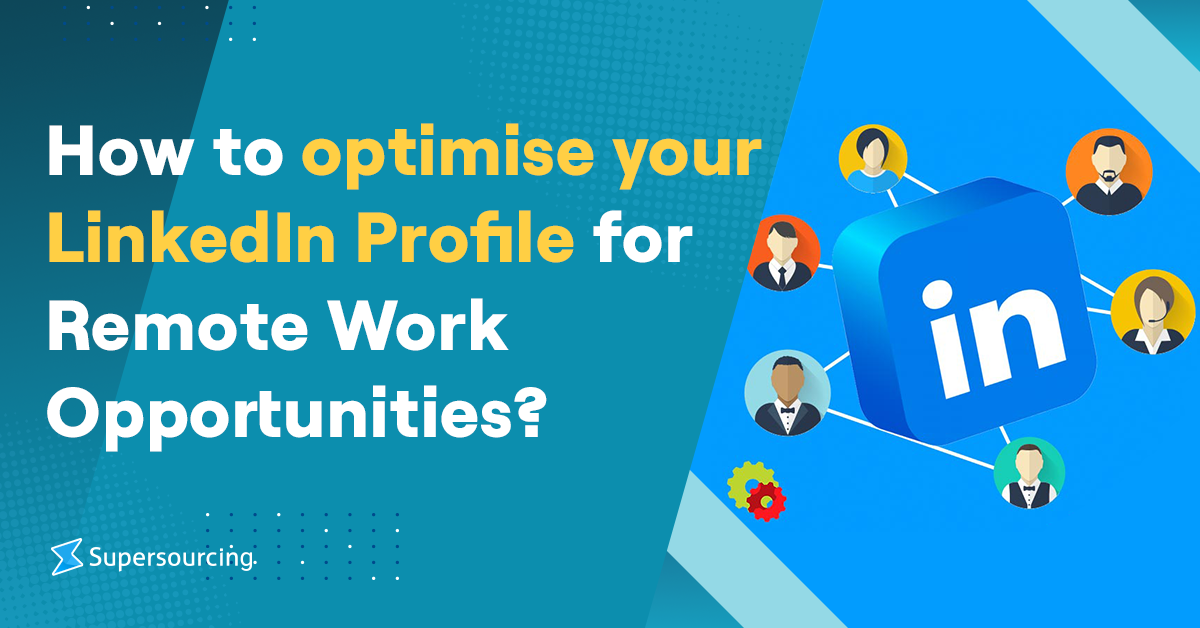Table of content
With the rise of remote work opportunities, it’s more important than ever to have a LinkedIn profile that stands out from the crowd. In this blog post, we will discuss how to optimize LinkedIn profile for remote work opportunities. We will cover tips on how to make your profile more appealing to potential employers and ways to increase your chances of being contacted for a remote job interview. Let’s get started!
Importance of Optimizing your LinkedIn Profile
Your LinkedIn profile is one of the first places potential employers will go to learn more about you. If your profile is not up-to-date or does not accurately reflect your skills and experience, you may miss out on opportunities for remote work. Optimizing your LinkedIn profile can help you appear more professional and qualified for the jobs you are interested in.
In recent times, with an increase in the number of people working remotely, LinkedIn has become an important tool for job seekers. Many companies are now using LinkedIn remote jobs to find candidates for open positions. LinkedIn allows you to connect with potential employers and recruiters who may not be able to find you through other channels.
Optimizing your profile can help ensure that you are being seen by the right people and that your profile accurately reflects your qualifications.
Make it easy for employers to find you in LinkedIn search results
If you want to be found in LinkedIn search results, it is important to include the right keywords in your profile. Potential employers are likely to use specific keywords when searching for candidates on LinkedIn. If your profile does not include these keywords, you may not appear in the search results.
To find the right keywords to include in your profile, think about the skills and experience that make you a good fit for remote work. Then, take a look at job postings for positions that interest you and see what kinds of keywords they are using. You can also use LinkedIn’s “People Also Viewed” feature to see what other profiles come up when viewing yours. This can give you an idea of the types of keywords that LinkedIn’s algorithm is associating with your profile.
Once you have a list of keywords, make sure to include them in the following places on your profile:
- Your headline
- Your summary
- The “Experience” section of your profile
- The “Skills & Endorsements” section of your profile
Including keywords in these sections will help ensure that your profile comes up in relevant search results.
It is also important to keep your LinkedIn profile updated. Regularly updating your profile shows potential employers that you are actively looking for opportunities and that you are keeping your skills and experience up-to-date. You can update your LinkedIn profile by adding new positions, skills, or accomplishments.
If you are not sure how to update your profile, LinkedIn has a helpful “Profile Optimization” tool that can guide you through the process.
Add a professional picture
Your profile picture is one of the first things that potential employers will see when they view your profile. It is important to have a professional picture that accurately represents who you are and what you do. A good LinkedIn profile picture should be:
- A close-up of your face
- Well-lit
- Taken against a neutral background
- In focus
If you do not have a professional headshot, there are many ways to get one without spending a lot of money. You can ask a friend or family member to take a picture of you or use a service like Fiverr or Upwork to find someone who can take a high-quality headshot for you.
Once you have a professional headshot, adding it to your LinkedIn profile is easy. Simply go to your profile and click on the “Add Profile Photo” button. Then, upload the photo from your computer or choose one from your social media accounts.
A professional headshot can make a big difference in how potential employers perceive you. It shows that you are serious about your career and that you are willing to invest in yourself.
Give importance to networking
Networking is an important part of finding a job, and LinkedIn is a great platform for networking. You can use LinkedIn to connect with potential employers, recruiters, and other professionals in your industry.
When networking on LinkedIn, it is important to be professional and polite. You should avoid sending generic messages or requests to connect with people you do not know. Instead, take the time to personalize each message that you send. Mention something that you have in common or explain why you would like to connect with the person.
It is also a good idea to join relevant LinkedIn groups. These groups provide an opportunity to network with other professionals who share your interests. Many groups also have job postings and discussions about remote work opportunities.
When joining a LinkedIn group, be sure to read the group’s description and rules before posting anything. This will help you avoid violating any of the group’s guidelines and getting kicked out.
Operations need to have developmental involvement
Operations are made aware of all the changes to the code that are meant for development. As a result, they are able to anticipate how they can impact product infrastructure and make sure that developers keep in mind factors like tooling, security, troubleshooting, deployment, monitoring, and hardware constraints required for any production system.
Post content that is relevant to your industry
In addition to networking, LinkedIn can also be used to share content with potential employers and other professionals. When posting content on LinkedIn, it is important to make sure that the content is relevant to your industry.
Sharing relevant content shows potential employers that you are knowledgeable about your field and that you are keeping up with the latest news and trends. It also helps you build relationships with other professionals in your industry.
Conclusion
Optimizing your profile for LinkedIn remote jobs is a great way to improve your visibility to potential employers and recruiters. By including keywords, updating your profile regularly, adding a professional headshot, networking, and sharing relevant content, you can make sure that your LinkedIn profile is working for you.
Doing these things will take some time and effort, but it will be worth it when you start receiving messages from potential employers about remote work opportunities. So what are you waiting for? Start Optimizing your LinkedIn Profile today!







